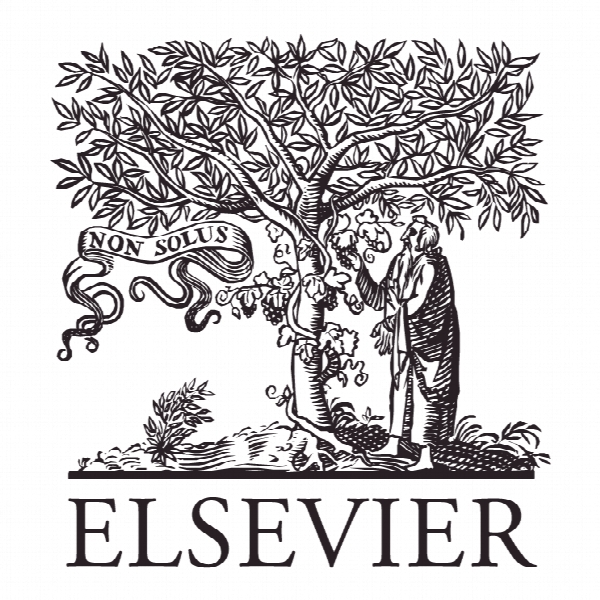چشم انداز شبکه کنش در ارزیابی راندمان ارتباط R & D از اکوسیستم های نوآوری An actor-network perspective on evaluating the R&D linking efficiency of innovation ecosystems
- نوع فایل : کتاب
- زبان : انگلیسی
- ناشر : Elsevier
- چاپ و سال / کشور: 2017
توضیحات
رشته های مرتبط محیط زیست
مجله پیش بینی فنی و تغییر اجتماعی – Technological Forecasting & Social Change
دانشگاه کارشناسی ارشد مدیریت بازرگانی در بیوتکنولوژی، پزشکی تایپه، تایوان
نشریه نشریه الزویر
مجله پیش بینی فنی و تغییر اجتماعی – Technological Forecasting & Social Change
دانشگاه کارشناسی ارشد مدیریت بازرگانی در بیوتکنولوژی، پزشکی تایپه، تایوان
نشریه نشریه الزویر
Description
1. Introduction Research and development (R&D) have become key factors contributing to economic growth in both advanced and developing economies (Corrado et al., 2009; Falk, 2006; Mario, 2009; OECD, 2007; Schwab, 2012). The increase in a country’s overall level of R&D efficiency leads to the corresponding increases in its competitive advantage (De Jorge and Suarez, 2011; Kang and Park, 2012; Sosa, 2012). Implementing technological innovation strategies to accelerate the research and development has thus become one of the most important industrial policies for governments. For example, the National Science and Technology Council of United States have been developing national strategic plan for advanced manufacturing to guide the federal program and activities in support of the research and development (Holdren, 2012). The council considered that the acceleration of innovation required the bridging of a number of gaps in the present innovation system, particularly the gap between R&D activities and the development of technological innovations in domestic production of goods. To achieve optimal effects, the decision-making and strategic planning of R&D investment needs to be well coordinated in evaluating the relative efficiency of the innovation system. However, the operation of innovation system is a multidimensional network and interconnected by actors in different organizational context (e.g. university, government and non-profit research institutions, and business enterprises). The complexities of innovation outcomes are strongly influenced by the interactions among actors in the innovation system (network) (Hoholm and Araujo, 2011). Despite previous researches have investigated the R&D performances, they neglected the existence and interacting effects of internal or linking activities, and thus could not evaluate the impact of sector-specific ineffi- ciencies on the overall efficiency of the system as a whole (Färe and Grosskopf, 2000; Lewis and Sexton, 2004; Löthgren and Tambouur, 1999; Prieto and Zofio, 2007). Therefore, an evaluation model that takes into account the effects of actors’ co-linking activities in the innovation process is highly desired. The actor-network theory, proposed by researchers from the sociology of science (Latour, 1987; Callon, 1986; Law, 1992; Bijker and Law, 1992), examines the motivations of actors who form the elements, linked by association, of heterogeneous networks of aligned interests (Walsham and Sahay, 1999). The philosophy of actor-network theory has become widely acknowledged in recent years, particularly in the field of innovation research (Alcouffe et al., 2008; Donaldson et al., 2002; du Preez, 2012; Hoholm and Araujo, 2011; Miettinen, 1999; Prout, 2008; Remírez et al., 2011; Thrane et al., 2010; Yoo et al., 2005), and organizational studies and strategic management (Czarniawska, 2006; Durepos and Mills, 2012; Lagesen, 2012; Steen, 2010; Vickers and Fox, 2010; Whittle and Spicer, 2008). This study employed the actor-network theory to illustrate how the dynamic mechanism of innovation emerges and unfolds at the national level in practice. According to the literature, the innovation processes are highly situated and contingent (Pavitt, 2005) with linkages among actors, organization, industrial network and other distant sectors. The national innovation system is a set of interacting actors (e.g. university, government and non-profit research institutions, and business enterprises) that create scientific knowledge. All actors in the innovation system need to collaborate in formal and informal networks not only to generate new knowledge but also to strategically create and shape supportive system resources. Cohen and Levinthal (1989) proposed that the purposeful establishment of selective interactions within networks can promote firms to access complementary knowledge. Griliches (1979) demonstrated that the generation of knowledge may be viewed as the outcome of a knowledge production process. The production of new knowledge requires the access to external knowledge as a source of new ideas either to improve existing technologies or to provide the basis for brand new ones. Previous studies have highlighted the effect of knowledge spillovers on the total factor productivity (TFP) growth (Dumais et al., 2002; Jones, 1995; Krammer, 2015; Romer, 1990; Thompson, 2006). Romer (1990), Jones (1995) and others adopted the endogenous growth model of profit-seeking firms’ investments in R&D and demonstrated that the firm’s R&D not only raises its profits, but also has a positive externality on other firms’ R&D productivity. Although the importance of externalities in knowledge or R&D had been recognized, there is an ongoing debate as to what extent knowledge spillovers can actually increase long-term per capita growth (Gehringer, 2016; Jones, 1995; Romer, 1990). These knowledge creation and transfer processes are, however, characterized by uncertainty and controversy, particularly in the interactions among actors in the network and the exploration of knowledge. Antonelli et al. (2011) indicated that the intentional interactions among innovative agents are important to the success of knowledge production processes. Since the R&D performance of the innovation system is a complex phenomenon situated within a network of interconnected processes, the linkages in the network should tighten the institutionally embedded relationship between innovation production and environment (Guan and Chen, 2012; Hoholm and Araujo, 2011). This study aimed to re-construct the innovation system from the actor-network theory perspective and further examine the relative R&D efficiency from a multi-dimensional viewpoint.


